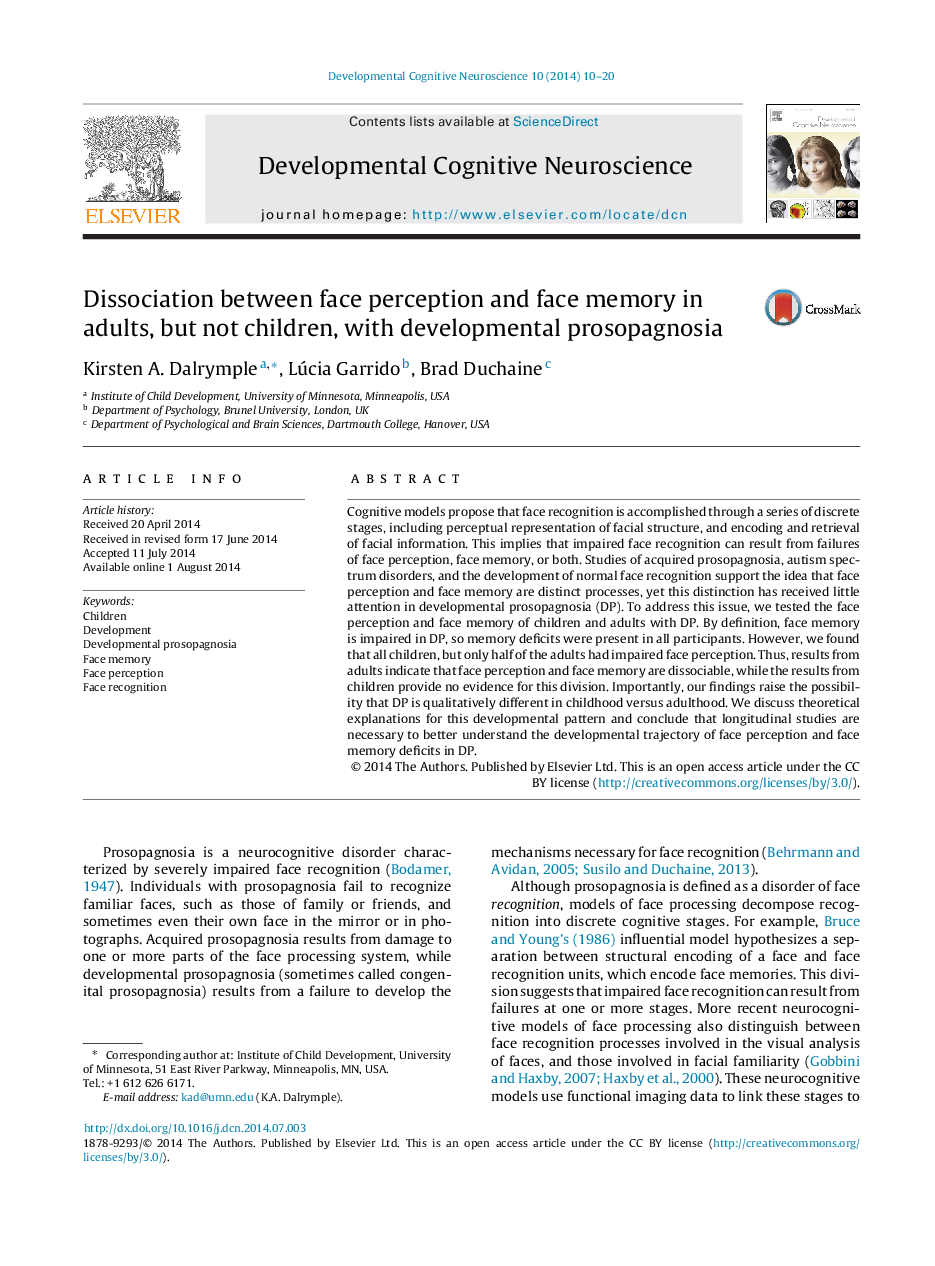| Article ID | Journal | Published Year | Pages | File Type |
|---|---|---|---|---|
| 4316607 | Developmental Cognitive Neuroscience | 2014 | 11 Pages |
•Individuals with developmental prosopagnosia (DP) have impaired face recognition.•In theory, DP could involve impaired face memory, impaired face perception, or both.•Memory deficits were present in all of our child and adult DPs.•All children, but less than half of the adults had impaired face perception.
Cognitive models propose that face recognition is accomplished through a series of discrete stages, including perceptual representation of facial structure, and encoding and retrieval of facial information. This implies that impaired face recognition can result from failures of face perception, face memory, or both. Studies of acquired prosopagnosia, autism spectrum disorders, and the development of normal face recognition support the idea that face perception and face memory are distinct processes, yet this distinction has received little attention in developmental prosopagnosia (DP). To address this issue, we tested the face perception and face memory of children and adults with DP. By definition, face memory is impaired in DP, so memory deficits were present in all participants. However, we found that all children, but only half of the adults had impaired face perception. Thus, results from adults indicate that face perception and face memory are dissociable, while the results from children provide no evidence for this division. Importantly, our findings raise the possibility that DP is qualitatively different in childhood versus adulthood. We discuss theoretical explanations for this developmental pattern and conclude that longitudinal studies are necessary to better understand the developmental trajectory of face perception and face memory deficits in DP.
